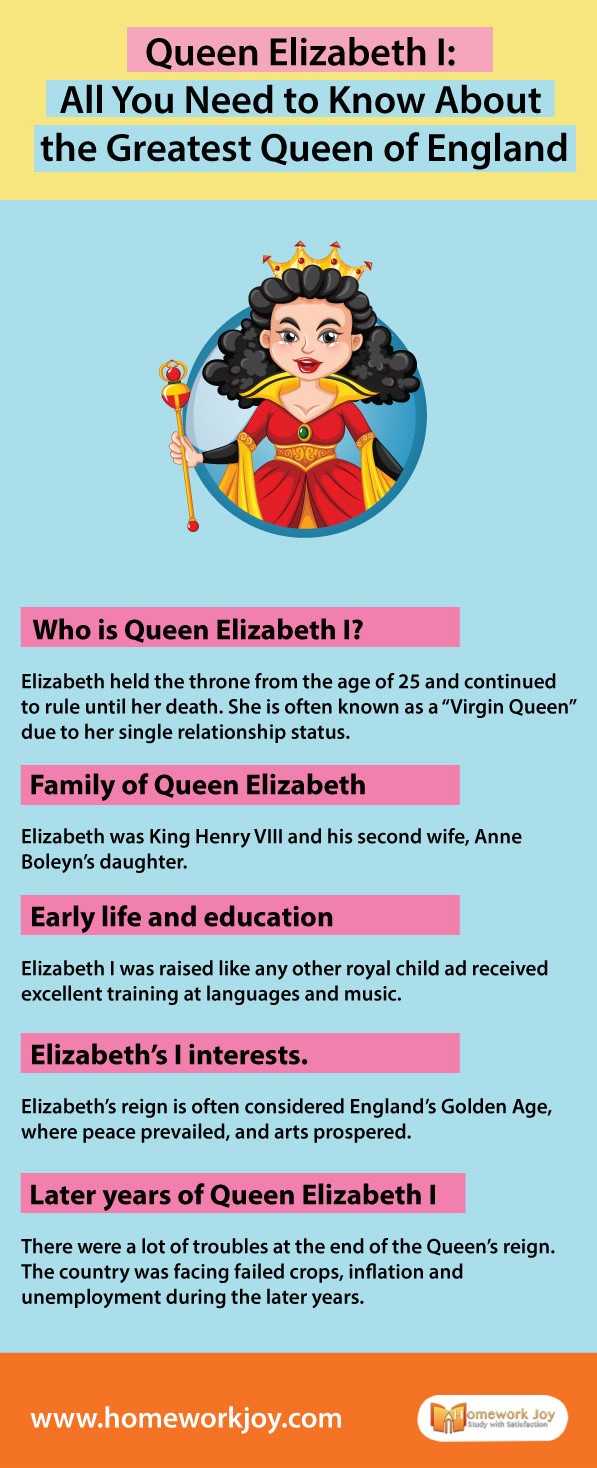Queen Elizabeth I, also known as Virgin Queen, was born on September 7, 1533, in Greenwich, London. Elizabeth held the throne from the age of 25 and continued to rule until her death. She is often known as a “Virgin Queen” due to her single relationship status.
Family of Queen Elizabeth I
Elizabeth was King Henry VIII and his second wife, Anne Boleyn’s daughter. The king ardently hoped that Anne Boleyn would give birth to a male heir, but the birth of Elizabeth weakened the new Queen’s position. By the time of Elizabeth’s third birthday, her mother Anne was beheaded by Henry on charges of adultery and treason.
Early life and education
Elizabeth I was raised like any other royal child and received excellent training in languages, and studied history, rhetoric, moral philosophy, and music. In addition to Greek and Latin, she also became fluent in French and Italian.
Elizabeth’s I interests.
Elizabeth’s reign was sometimes referred to as England’s Golden Age, an era of peace and prosperity when the arts reached their full prosperity. Queen Elizabeth I is known as one of the greatest queens of England for a reason. While she worked hard at court, Elizabeth took time for leisurely pursuits as well. She loved music with Thomas Tallis and William Byrd among her court musicians. Elizabeth’s reign was the birth of works by many greats like William Shakespeare and Christopher Marlowe.
Writers paid tribute to Queen Elizabeth in many literary forms. The poet Edmund Spenser based his character of Gloriana in The Faerie Queene on Elizabeth, and she was sometimes referred to by this name as well.
Also, artists honored the Queen by painting her portrait. The images reveal that Elizabeth was an early fashionista in many ways. She loved jewelry, and her garments were often made with gold and silver.
Later years of Queen Elizabeth I
There were a lot of troubles at the end of the Queen’s reign. The country was facing failed crops, inflation, and unemployment during the later years. There were riots all over the country over food shortages. Although the Queen’s later years were difficult, she still showed devotion to the people of her country and continued to serve them until her death.
Death of the Elizabethan Era
The Queen died on March 24, 1603, at Richmond Palace in Surrey. And the reason behind her death is that cosmetic concoction she used to apply on her face to get the pale look consisted of lead and vinegar, which might be the reason for her sudden demise.
